How to Write Email
How to Write a Polite RSVP Email
Discover the essential elements of crafting a compelling RSVP email that will leave a lasting impression – your event etiquette depends on it.
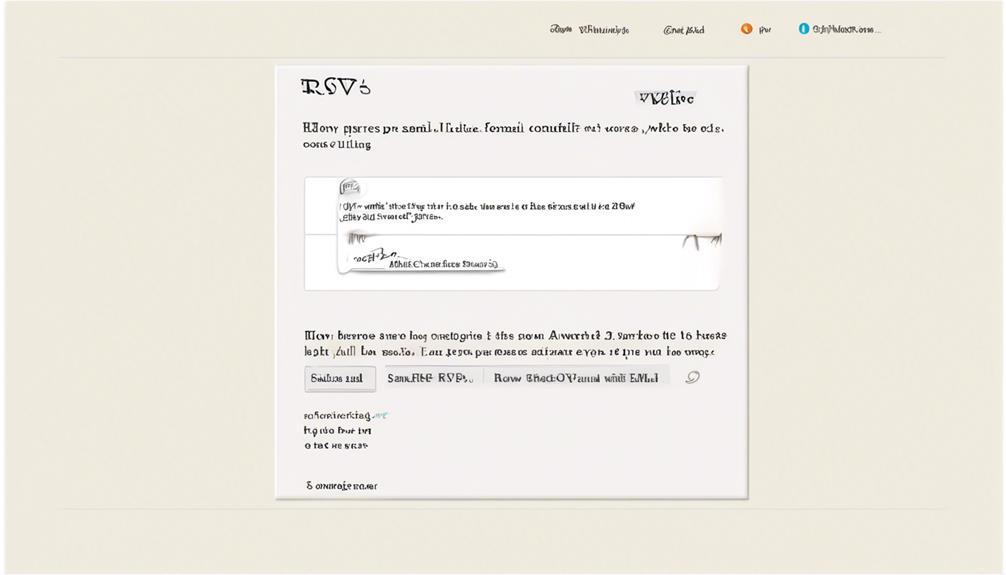
We understand – composing RSVP emails can often seem like a mundane chore, particularly when you’re managing invitations to numerous events. Yet, learning how to write a clear and formal RSVP email can significantly impact your standing in both social and work-related groups.
From setting the right tone to ensuring clarity in your response, there are key elements that can elevate your RSVP game. But before you dismiss the idea, let's explore some practical techniques that can simplify this process and leave a lasting impression on event hosts and organizers.
Key Takeaways
- Respond promptly and within 24-48 hours of receiving the invitation to show thoughtfulness and respect for the host's efforts.
- Clearly indicate attendance and number of guests to help the host make necessary arrangements and ensure a well-organized event.
- Use polite language, maintain a professional tone, and keep the email concise and error-free to reflect positively on the respondent's etiquette and reliability.
- Encourage prompt responses by clearly stating the RSVP deadline, providing multiple response options, and sending reminder emails before the deadline.
Understanding RSVP Emails
Understanding RSVP emails requires clear communication and prompt responses to ensure successful event planning. When an invitation is received, it's essential to respond promptly to the RSVP email. This not only shows good manners but also helps the host to plan the event effectively.
When replying to an RSVP email, it's important to be clear and concise in our response. Clearly indicating whether we'll attend or not, and if allowed, the number of guests accompanying us, helps the event organizer to make necessary arrangements. It's also crucial to express gratitude for the invitation, regardless of our ability to attend. This shows appreciation for being included and maintains a positive relationship with the host.
Additionally, if there are any special dietary requirements or other relevant information, it's best to include these in the reply. Effective communication via RSVP emails ensures that event planning runs smoothly and that both hosts and guests are aware of the necessary details.
Importance of RSVP Responses
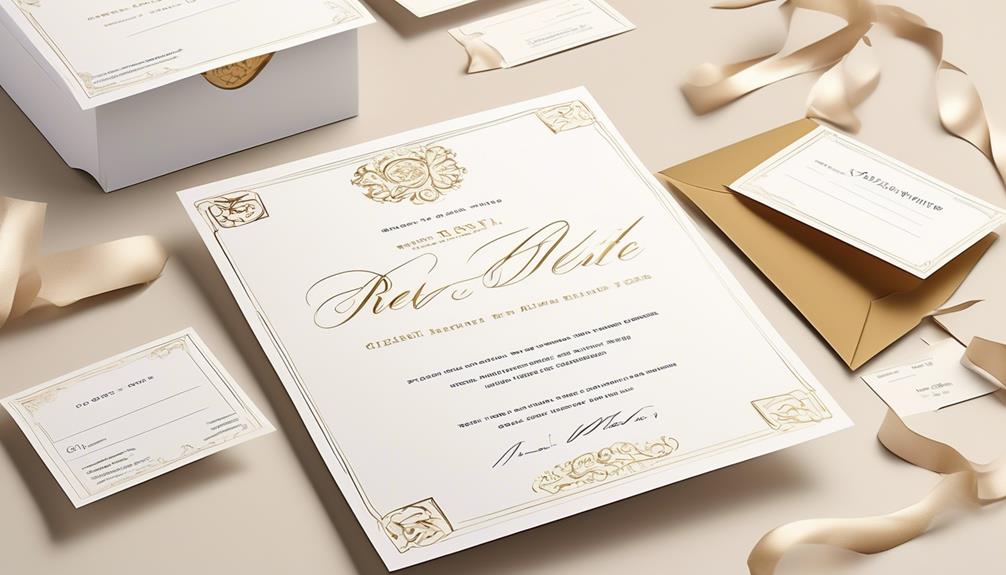
Prompt and courteous RSVP responses are crucial for effective event planning and ensuring a seamless and enjoyable experience for all involved. Understanding the importance of RSVP responses not only showcases good manners but also contributes to the smooth execution of events. Here's a table to highlight the significance of RSVP responses:
| Importance of RSVP Responses | Emotional Impact |
|---|---|
| Respect and Consideration | Shows thoughtfulness and respect for the host's efforts |
| Efficient Planning | Helps the host make necessary arrangements for the event |
| Stress-Free Experience | Ensures a well-organized and enjoyable event |
| Good Impression | Reflects positively on the respondent's etiquette and reliability |
Making timely and accurate RSVP responses allows hosts to plan effectively, allocate resources efficiently, and create a memorable experience for all attendees. By writing an RSVP email in a polite and professional tone, guests can contribute to a stress-free event for both the host and themselves. Therefore, understanding the importance of RSVP responses and promptly sending them is crucial for successful event planning and execution.
RSVP Email Etiquette
When crafting an RSVP email, it's essential to adhere to proper etiquette to ensure clear communication and convey respect for the host's invitation.
RSVP email etiquette dictates that the response should be prompt, typically within 24-48 hours of receiving the invitation. The email should begin with a polite salutation, followed by an expression of gratitude for the invitation.
It's important to clearly state whether you'll be attending, and if applicable, the number of guests accompanying you. When declining the invitation, provide a brief explanation or well-wishes for the event's success.
Maintaining a professional and gracious tone throughout the email is crucial to uphold etiquette standards. Additionally, RSVP emails should be concise and to the point, avoiding unnecessary details or lengthy explanations.
Lastly, always ensure to double-check for any spelling or grammatical errors before sending the response. By following these guidelines, one can effectively write an RSVP email in the appropriate RSVP format, demonstrating courteous and respectful communication.
Timely RSVP Responses
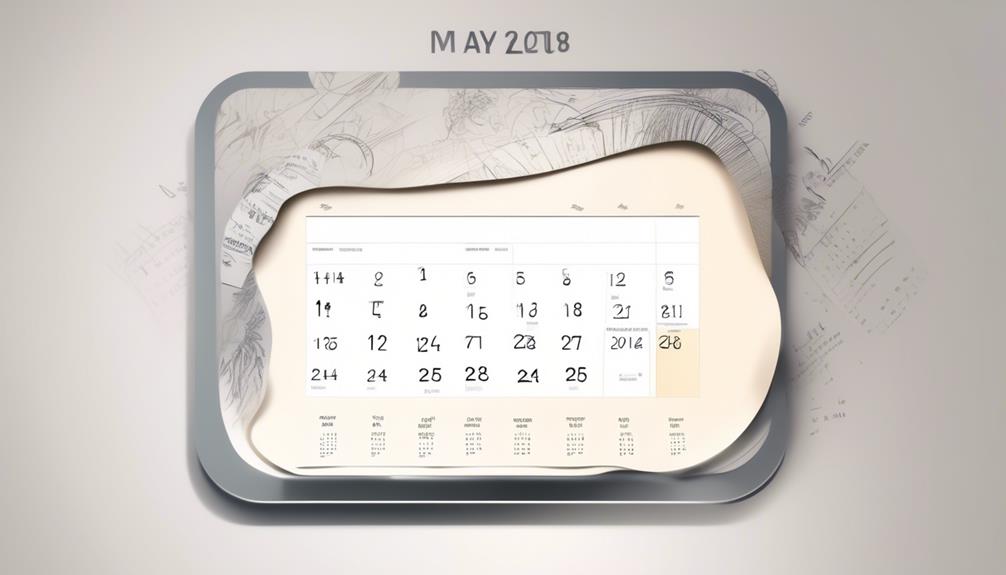
We all know how crucial it's to respond to RSVP invitations promptly. Timely RSVP responses are essential for hosts to effectively plan and organize their events.
Late RSVPs can have a significant impact on the logistics and overall success of an event, which is why we must encourage prompt responses.
Importance of Timely RSVP
Understanding the significance of providing timely RSVP responses is crucial in ensuring the smooth and efficient planning of events. Timely RSVPs are more than just a courtesy; they're essential for hosts to effectively organize and manage their events. Here's why timely RSVPs are important:
- Accurate Attendance Planning: Timely responses help hosts accurately gauge attendance, plan logistics, and allocate resources effectively.
- Respect and Rapport: Providing timely RSVPs demonstrates respect for hosts' efforts and helps create a positive rapport with them.
- Stress Avoidance: Timely RSVPs avoid last-minute stress for hosts and ensure a smooth experience for all guests.
- Necessary Arrangements: Clearly indicating attendance status in RSVP responses helps hosts make necessary arrangements, contributing to the overall success of the event.
Impact of Late RSVP
The impact of late RSVPs on event planning and organization cannot be understated, as they significantly affect the host's ability to ensure a seamless and enjoyable experience for all attendees. Late or unclear RSVP responses can cause unnecessary stress for the host and make the planning process inefficient. Timely RSVP responses help the host create a seamless and enjoyable experience for all guests. Clearly indicating attendance or decline helps hosts plan and make necessary arrangements for the occasion.
| Impact of Late RSVP | ||
|---|---|---|
| Unnecessary stress for the host | Inefficient planning process | Difficulty in making necessary arrangements |
Late RSVPs not only disrupt the planning process but also impact the overall experience for all attendees. Therefore, it is essential for guests to promptly respond to RSVP emails to ensure the success of the event.
Encouraging Prompt Responses
Prompt responses to RSVP emails are crucial for ensuring a seamless and enjoyable event experience for all attendees. When crafting invitation emails, it's important to clearly communicate the RSVP request and the preferred method for the RSVP reply. Here are some strategies to encourage prompt responses:
- Clearly state the deadline for RSVPs to create a sense of urgency.
- Use polite language to encourage recipients to confirm their attendance promptly.
- Provide multiple response options, such as email, phone, or online form, to make it convenient for recipients to RSVP.
- Send a reminder email a few days before the RSVP deadline to nudge recipients who haven't replied.
Clear Attendance Indication
When responding to an RSVP email, it's important to provide a clear indication of attendance, opting for definitive responses such as 'Yes' or a gracious decline if unable to attend, rather than vague or uncertain answers.
When composing your RSVP response, ensure that the subject line of your email clearly indicates your intentions. Start by expressing gratitude for the invitation before clearly stating whether you'll attend or not.
Utilize the RSVP response options provided, and if none are offered, craft a clear and concise response. For a positive confirmation, a simple 'Yes' suffices, while for a polite decline, a response expressing regret for being unable to attend is appropriate. Avoid using phrases like 'I'll try to make it' or 'I might come', as they can lead to confusion for the event organizers.
It's imperative to write a clear RSVP to avoid any misunderstandings and assist the hosts in planning. By providing a definite response, you contribute to the smooth organization of the event.
RSVP for All Invited Guests
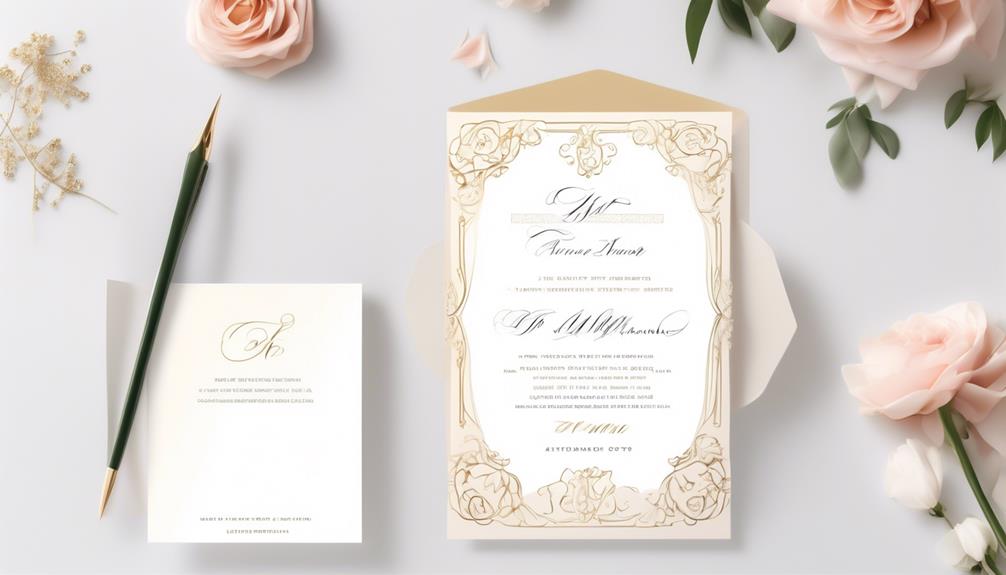
We all know the importance of sticking to RSVP deadlines to help the hosts with their event planning. It's crucial that all the invited guests provide a clear indication of their attendance, and it's polite to respond promptly.
When responding, make sure to include any necessary details, such as dietary restrictions or plus ones, to ensure that the event organizers have all the information they need.
RSVP Deadline Reminder
How can we ensure that all invited guests have responded by the RSVP deadline?
Here are four effective ways to remind guests of the RSVP deadline for your event:
- Send a polite and clear reminder email: Craft a gentle reminder email reiterating the importance of their response by the specified deadline. Include a direct link or instructions on how to RSVP.
- Utilize social media platforms: Post friendly reminders on your social media platforms to reach a wider audience and prompt guests to RSVP.
- Personalized follow-up calls: For key guests or those who haven't responded, a personal follow-up call can convey the importance of their presence and prompt them to RSVP promptly.
- Incentivize prompt responses: Consider offering a small incentive for guests who RSVP by the deadline, such as a special gift or early access to event details.
Clear Event Details
Where should all invited guests look for the event's date, time, and location details in the RSVP email? In the RSVP email, all invited guests should easily find the event's date, time, and location details. Clear and detailed event information ensures that guests can make necessary arrangements and plan accordingly. Below is a table that showcases some essential event details that should be included in the RSVP email:
| Event Details | Example |
|---|---|
| Date | Saturday, May 28, 2022 |
| Time | 6:00 PM |
| Location | The Grand Ballroom, XYZ Hotel |
| RSVP Deadline | Please respond by April 15, 2022 |
| Additional Notes | Please indicate any dietary requirements |
Including comprehensive event details enables guests to prepare, allows for proper seating arrangements, and ensures that dietary requirements are accommodated. This approach sets the tone for a well-organized and thoughtful event.
Polite Response Request
In ensuring a well-organized and thoughtful event, it's essential to politely request responses from all invited guests in the RSVP email, adding a touch of class to the occasion. When crafting your polite response request, keep in mind the following key points:
- Use formal language: Ensure that the RSVP via email maintains a polite and formal tone to reflect the significance of the event, such as a wedding.
- Clearly indicate the RSVP deadline: Communicate the date by which you expect a response, allowing ample time for guests to make arrangements.
- Express gratitude: Express appreciation for the invitee's consideration and time, emphasizing the importance of their response.
- Provide clear instructions: Clearly outline the method of response, whether it be through an email, website, or other means, to facilitate a seamless process for the invitees.
Crafting Your RSVP Response
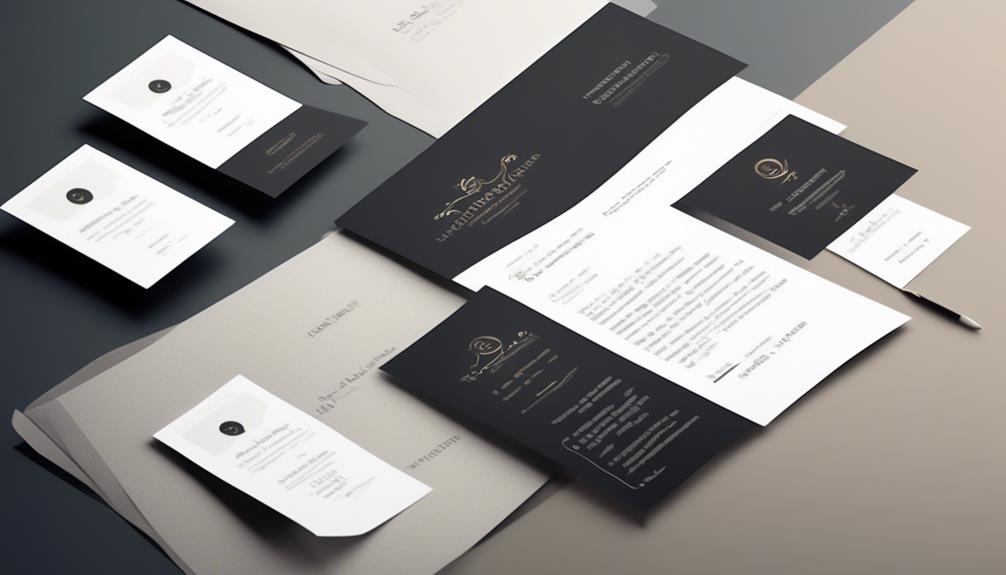
Upon receiving an invitation, it is customary to promptly respond with our attendance status, utilizing email as the preferred method for its efficiency and clarity. Crafting your RSVP response is crucial in ensuring a smooth event planning process and conveying respect for the host's efforts. When replying to an RSVP, it is essential to be clear and concise to aid the host in planning effectively. Below is a table outlining the key components of crafting an effective RSVP response:
| Component | Description | Example |
|---|---|---|
| Promptness | Respond to the invitation in a timely manner to aid in event planning | "Thank you for the invitation. I will attend the event." |
| Clarity | Clearly indicate your attendance status – attending, declining, or undecided | "I regret that I am unable to attend the event." |
| Politeness | Convey gratitude to the host for the invitation and their efforts in organizing the event | "Thank you for inviting me. I am still considering my attendance." |
| Professionalism | Use a professional format and language in your email response | "I would be delighted to attend the event. Thank you for including me." |
Crafting a well-thought-out RSVP response not only aids in event planning but also reflects positively on your etiquette and consideration for the host.
Benefits of RSVP Emails

Crafting a well-thought-out RSVP response not only aids in event planning but also contributes to the efficient management and success of the event by ensuring accurate guest counts and reducing unnecessary expenses. There are several benefits of utilizing RSVP emails for event coordination:
- Accurate Guest Count: RSVP emails provide a clear indication of the number of attendees, allowing for better planning of seating, catering, and event logistics.
- Cost Reduction: By having an accurate guest count, event organizers can minimize waste and unnecessary expenses, leading to cost savings.
- Enhanced Organization: Centralized and organized RSVP responses streamline the process of managing guest lists and related event details.
- Improved Communication: RSVP emails facilitate the dissemination of important event information such as schedules, venue details, and special instructions, ensuring that guests are well-informed.
Casting a Clear Subject Line

To effectively capture the recipient's attention and prompt a timely response, it's crucial to craft a subject line that conveys the purpose and urgency of the RSVP email. When composing subject lines for RSVP messages, it's essential to be concise yet informative.
The subject line serves as the first point of contact, and it should clearly state the purpose of the email to ensure the recipient understands the need for a response. By incorporating essential event details such as the date, time, and location, the subject line effectively conveys the urgency of the response needed.
Furthermore, it's imperative to use the subject line to create a sense of importance and urgency, encouraging the recipient to prioritize their response.
In the context of standard RSVP emails, the subject line should clearly indicate the event and the request for an RSVP. This ensures that the recipient immediately understands the nature of the email and can respond accordingly.
Additionally, when seeking an exact number of attendees, the subject line should emphasize the need for a prompt and accurate response, prompting the recipient to take the request seriously.
Customized Greetings and Event Information
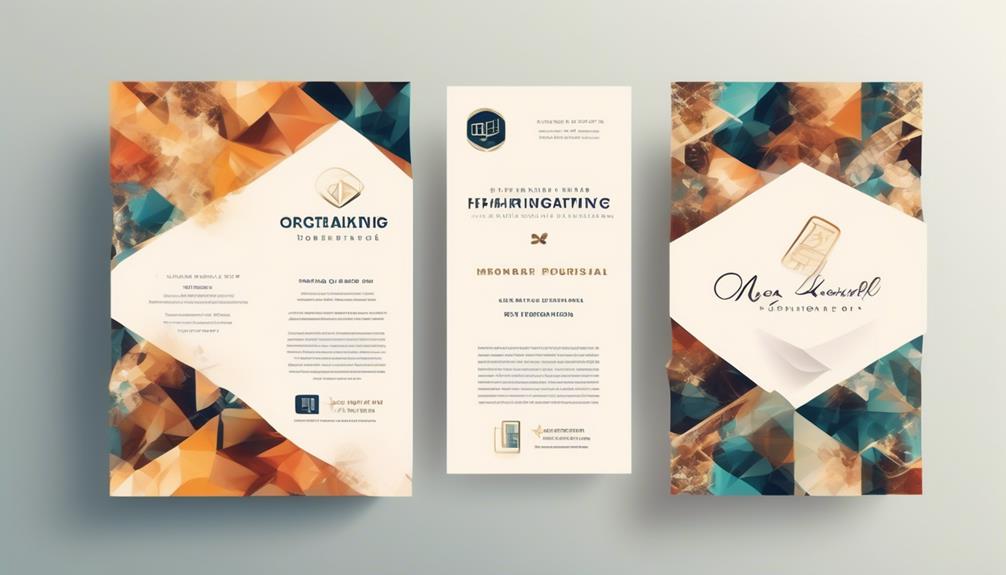
How can we create a personalized and engaging RSVP email that makes our guests feel valued and informed about the event details? When crafting an RSVP email, it's essential to ensure that the message isn't only informative but also tailored to the recipient. Here are some key strategies to consider:
- Personalized Greetings: Begin the email with a customized greeting that includes the recipient's name. This small gesture can go a long way in making the guest feel valued and appreciated.
- Detailed Event Information: Provide comprehensive details about the event, including the date, time, location, and any special instructions. Clarity is crucial for guests to plan and prepare accordingly.
- Tailored RSVP Request: Customize the tone of the RSVP request to match the nature of the event. Whether it's a formal affair or a casual gathering, aligning the tone with the event's style sets the right expectations for the guests.
- Additional Relevant Details: Enhance the guest experience by including extra relevant information, such as dress code, parking instructions, or any specific requests. These details can contribute to a seamless and enjoyable experience for the guests on the special day.
Clear RSVP Request and Deadline
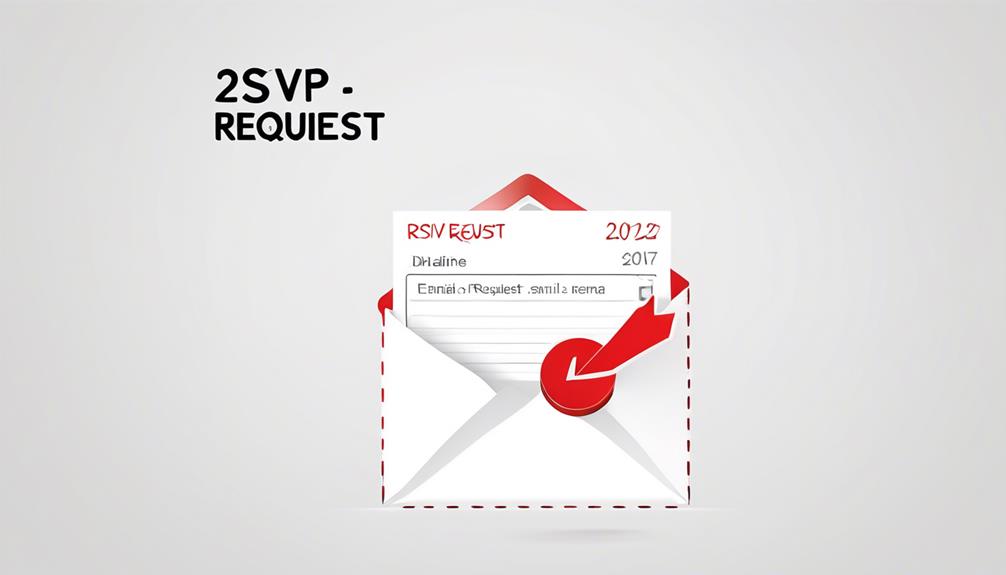
As we ensure our guests feel valued and informed, it's crucial to clearly articulate the RSVP request and deadline for their response to the upcoming event.
When composing an RSVP email, it's essential to explicitly state the purpose of the communication, which is to request the recipient's response to attending a specific event or occasion. This should be followed by a clear and reasonable deadline by which the recipient is expected to reply.
The preferred method of response, whether via email or mail, should also be clearly communicated to ensure a seamless process. Additionally, any specific details required for the RSVP, such as the number of attendees or meal preferences, should be explicitly outlined in the email to avoid any confusion.
It's important to express gratitude for the recipient's prompt attention to the RSVP request, conveying appreciation for their timely response. By providing a clear RSVP request and deadline, guests are more likely to respond promptly and accurately, contributing to the overall success of the event.
Polite Closure
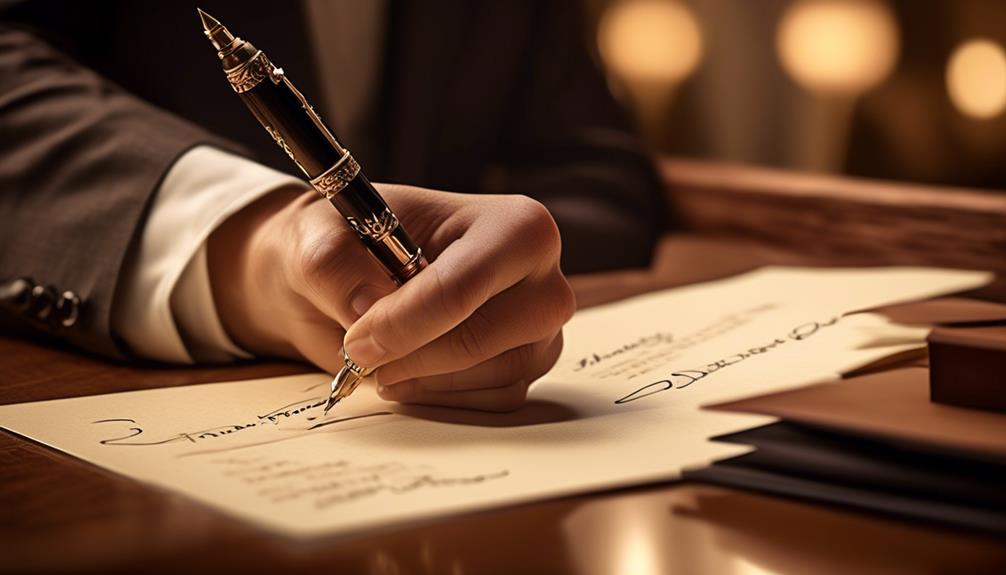
As we wrap up our discussion of how to write an RSVP email, it's essential to address the importance of a polite closure. Expressing gracious thank you and appreciation for the invitation is a key aspect of ending your email on a positive note.
Furthermore, signing off with a polite and professional closing statement leaves a lasting impression of respect and courtesy.
Gracious Thank You
We are sincerely grateful for the gracious invitation and appreciate the opportunity to attend. In crafting your RSVP email's gracious thank you, it's crucial to convey your appreciation in a respectful and courteous manner. This not only reflects positively on you but also strengthens your relationship with the host.
To achieve this, consider:
- Using a warm and heartfelt tone to express your thanks.
- Acknowledging the thoughtfulness of the invitation and the host's effort.
- Conveying your genuine gratitude for the opportunity to attend or regret for not being able to.
- Closing with a courteous and warm sign-off that leaves a positive impression.
Expressing Appreciation
After expressing sincere gratitude for the invitation and acknowledging the host's efforts, it's essential to conclude your RSVP email with a polite and appreciative statement. Thank you again for the kind invitation. Please let me know if there's any additional information needed. Répondez s'il vous plaît by the specified date is highly appreciated.
Looking forward to celebrating with you and the other guests.
RSVP Email Templates
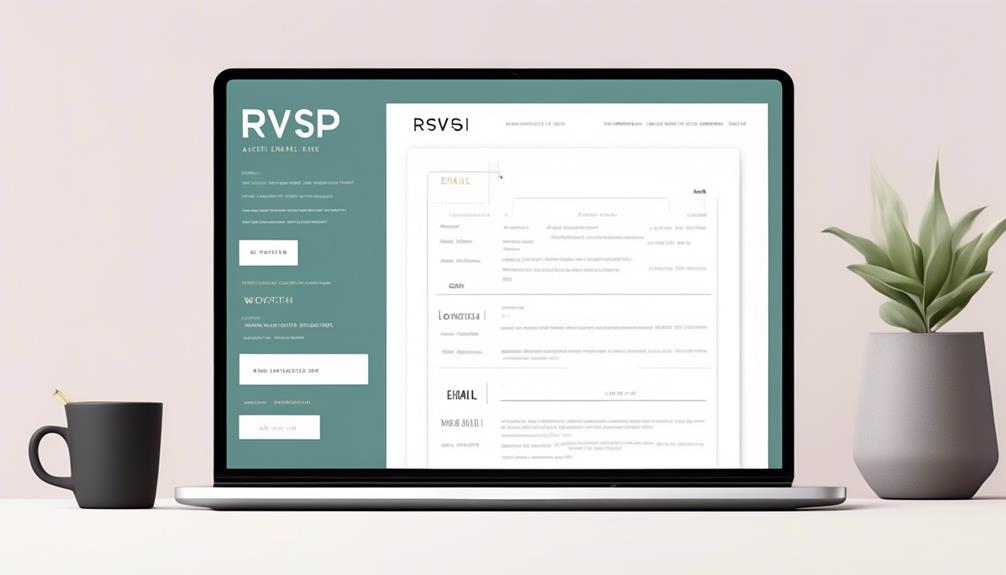
Craft RSVP email templates that captivate recipients and streamline the RSVP process for your upcoming events. When creating your RSVP email templates, keep in mind the following key elements to ensure effectiveness:
- Subject Line: Use a concise and attention-grabbing subject line that clearly conveys the purpose of the email and entices recipients to open it.
- Customized Greetings and Event Details: Personalize the greeting and provide detailed event information in the body of the email, including the event date, time, location, and any other pertinent details.
- Clear RSVP Request: Request a clear RSVP response with a specified deadline to ensure prompt replies and facilitate accurate event planning.
- Polite Closure: Conclude the email with a polite and friendly closure to maintain professionalism and leave a positive impression on the recipients.
Can I Use the Same Format for P.S. in an RSVP Email?
Yes, you can use the same format for P.S. in an RSVP email. It’s a great way to reinforce important details or add a personal touch. When writing a concise email closing, including a P.S. can give your email a friendly and memorable ending.
Frequently Asked Questions
How Do You Write an RSVP Response Email?
We write an RSVP response email by expressing our gratitude for the invitation. We should clearly state our attendance or regrets and provide any necessary details.
It's important to be prompt and courteous in our response. We should acknowledge the host's effort and help them plan effectively.
Our goal is to ensure a seamless event experience and demonstrate our appreciation for the invitation.
How Do You Confirm Rsvp?
How do we confirm RSVP?
Confirming RSVP can be done through a polite and timely response to the invitation. We can express gratitude for the invitation and clearly state our intention to attend or not. It's important to follow any specific instructions provided, such as RSVPing by a certain date or using a particular method. This ensures clear communication and helps the host make necessary arrangements.
How Do You Write RSVP on an Invitation?
When writing an RSVP on an invitation, we clearly indicate the requested response by using 'RSVP' followed by the deadline.
We also provide specific event details, such as date, time, and location, to ensure clarity.
It's important to use a polite and professional tone in the invitation to encourage prompt and clear responses.
How Do You Ask for RSVP to an Event via Email?
Asking for RSVP to an event via email is crucial for planning. We should ensure our email is clear, polite, and includes all necessary details.
We can politely request a response by a specific date, express our excitement about the event, and provide clear instructions on how to RSVP.
It's important to keep the email concise and easy to understand to encourage prompt responses.
Conclusion
We understand the importance of RSVP and how it contributes to a smooth event planning process.
Recently, we received an invitation to a friend's wedding and promptly sent in our RSVP to ensure they could finalize their guest list and seating arrangements.
This simple act of responding promptly can make a big difference in ensuring a successful and enjoyable event for all involved.
Natali – Editor in Chief (Strategy and Mastery, AI Expert) Natali, our Editor in Chief, is the driving force behind our content’s strategic direction. With a keen eye for detail and a deep understanding of market trends, Natali ensures that our content is top-notch and strategically aligned with our client’s goals. Her expertise in AI helps to seamlessly integrate advanced technology into our marketing strategies, pushing the boundaries of conventional marketing.
How to Write Email
Vacation Email Etiquette: How to Write with Politeness
Struggling to craft the perfect vacation email? You'll want to keep reading for essential tips and strategies to nail it.

So, we’re all familiar with the routine of composing a professional out-of-office email, correct? Actually, perhaps not.
While the idea of taking time off sounds like a breeze, the art of communicating that to your colleagues can be a bit more complex.
But fear not, because we've got some key tips and strategies to help you navigate the ins and outs of drafting the perfect out-of-office message.
Whether it's setting clear expectations or ensuring your absence won't disrupt the team's workflow, there's a lot to consider when it comes to mastering the art of the vacation email.
Key Takeaways
- Include specific details such as dates of absence, expected return date, and urgent instructions in the vacation email.
- Clearly communicate dates of absence in the out-of-office message and provide alternative contacts for urgent matters.
- Maintain a professional tone in all communication and convey professionalism and reliability in the out-of-office message.
- Understand company vacation policy and use appropriate request email templates, while also considering the impact on workload and showing consideration for the team when requesting time off.
Essential Components of a Vacation Email
When crafting a vacation email, it's essential to include specific details such as the dates of your absence, your expected return date, and any necessary instructions for urgent matters. A concise subject line should indicate that it's an informal vacation request. In the body of the email, maintain a professional tone to ensure a smooth and clear communication process.
In the first paragraph, clearly state the purpose of the email – to request vacation time. Provide the dates of your absence, including the start and end dates, and your expected return date. This information helps the recipient understand the duration of your absence and plan accordingly.
Additionally, if there are any specific instructions for urgent matters during your absence, make sure to include them in the email to ensure that any critical issues can be addressed in your absence.
Crafting a Professional Out-of-Office Message
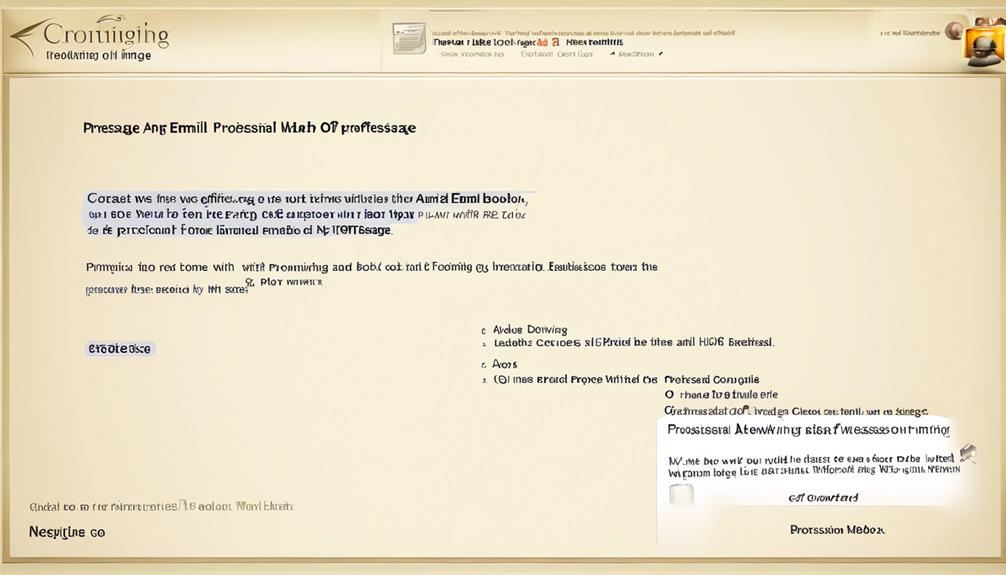
After requesting vacation time, it's important to also craft a professional out-of-office message that clearly communicates the dates of absence and provides alternative contacts for urgent matters.
When writing the out-of-office message, it's essential to ensure that it conveys a sense of professionalism and reliability. Clearly state the dates of your absence and provide an alternative contact in case of urgent matters.
It's good practice to express gratitude for understanding and cooperation during your leave. Additionally, offer to follow up on any pending matters upon your return to reassure colleagues and clients that their issues will be addressed promptly.
While crafting the message, it's important to adhere to company communication standards and policies to maintain consistency in tone and content. Avoid sharing unnecessary personal details in the out-of-office message to maintain a professional tone.
Writing a good out-of-office message is crucial as it reflects your commitment to professionalism and ensures that important matters are attended to in your absence.
Setting Expectations With Colleagues and Clients
To ensure smooth communication during my absence, we will clearly communicate our availability and response times for emails and calls to colleagues and clients. It's crucial to set realistic expectations and maintain a professional tone in all communication. Here is a simple table to help you craft a professional email and set expectations with your colleagues and clients:
| Information to Include | Example |
|---|---|
| Availability during vacation | I will be out of the office from [start date] to [end date]. |
| Response times for emails and calls | I will have limited access to emails and will respond within 24-48 hours. |
| Delegated responsibilities | Please contact [colleague's name] for any urgent matters. |
| Contact information | For immediate assistance, please reach out to [colleague's name] at [contact information]. |
Effective Examples of Out-of-Office Messages
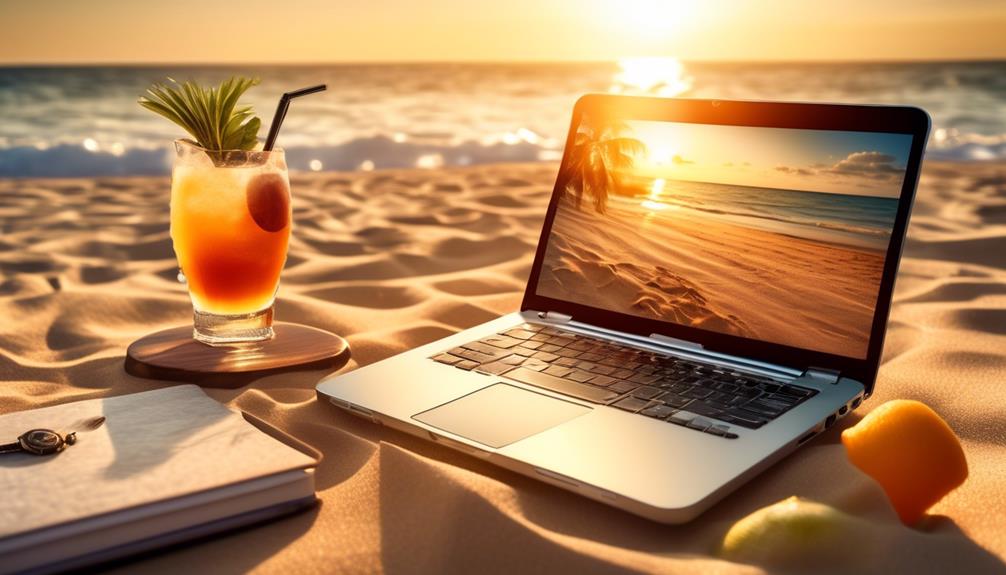
Crafting effective out-of-office messages is an essential aspect of maintaining clear communication while on vacation. When writing these messages, it's important to be polite and professional while providing the necessary information. Here are three effective examples of out-of-office messages that you can use as a template for your own:
- 'I am currently out of the office and will return on [date]. For urgent matters, please contact [colleague's name] at [colleague's email].'
- 'Thank you for your email. I'm out of the office until [date] and will have limited access to email. For immediate assistance, please contact [alternative contact].'
- 'I am on vacation until [date] and won't be checking emails. For urgent matters, please reach out to [colleague's name] at [colleague's email].'
These examples demonstrate a good rule of thumb for crafting effective out-of-office messages. They provide clear information about the duration of the absence, alternative contacts for urgent matters, and set professional expectations for communication while away.
When using these examples, be sure to customize them to fit your specific situation and maintain a polite and professional tone.
Mastering the Art of the Vacation Email
As we focus on mastering the art of the vacation email, it's essential to seamlessly shift from crafting effective out-of-office messages to the nuances of requesting and composing a professional vacation email.
When it comes to requesting time off, knowing how to write a Vacation Leave Request or Time Off Email is crucial. We need to make sure we understand the company vacation policy and use the appropriate request email template. It's important to know the steps for writing a vacation request email, including a concise subject line, specifying the reason for the request, exact dates, preparation steps, and a thank-you note. Additionally, we should ask ourselves if we really need to take those days off, consider the impact on our workload, and reflect consideration for our team.
Understanding different types of vacation request emails, such as reminders, emergency time off, annual vacations, one day off, or canceling a vacation request, is also essential. Before sending a vacation request email, we need to ensure we include emergency contact information if necessary and assure coverage during our absence.
Mastering the art of the vacation email requires attention to detail and adherence to professional etiquette.
Frequently Asked Questions
What Should I Write in a Vacation Email?
We should include the dates of our absence, the reason for our vacation, and who to contact in our absence.
It's important to keep the email brief and to the point, while also expressing gratitude for understanding.
We can reassure the recipient that we'll respond to any urgent matters upon our return.
It's also good to set up an out-of-office auto-reply with the same information.
How Do You Write an Email for Time Off?
We write an email for time off by crafting a clear subject line, stating the purpose, providing specific dates, and outlining a plan for managing responsibilities during absence.
We ensure to include emergency contact information and express willingness to address any concerns. Politeness, professionalism, and appreciation are crucial throughout.
Understanding company policies and considering workload impact on colleagues help in crafting a thoughtful request reflecting consideration for the team.
How Do You Email a Planned Vacation Leave?
When we email a planned vacation leave, it's important to be clear and concise about the dates and reason for our absence. We should also mention who'll be covering for us in our absence and provide any necessary contact information.
It's crucial to ensure that our email is professional and respectful of our colleagues' time and responsibilities. Lastly, we should make sure to set up an out-of-office auto-reply for any incoming emails during our vacation.
How Do I Professionally Say I Am on Vacation?
We inform our colleagues of our vacation by clearly stating the purpose and dates.
We assure them that work will be handled and maintain a polite and professional tone.
We offer to address any concerns and end with a thank you note and openness to discussions.
This approach ensures a professional and considerate communication of our absence.
Conclusion
We understand that taking vacation time can sometimes feel like a burden on our colleagues. However, by following the proper procedures and communicating effectively, we can ensure a smooth transition and minimal disruption.
Our team's support for each other's well-deserved time off strengthens our bond and ultimately leads to a more productive and positive work environment.
Erik – Email, SEO, AI Expert Writer Erik is the strategist, the thinker, and the visionary. His role at Influenctor is pivotal in integrating SEO with AI-driven content strategies. With an extensive background in email marketing and a profound understanding of search engine algorithms, Erik develops innovative strategies that elevate our client’s online presence. His work ensures that our content is seen, felt, and remembered.
How to Write Email
How to Write a Polite RSVP Email
Discover the essential elements for crafting a compelling RSVP email that guarantees a timely and clear response.

Crafting an RSVP email is akin to creating the ideal invite – each phrase and element reflects the event’s tone and professionalism. We’ve all gotten RSVP emails that puzzle us, leaving us unsure of how to reply or even what we’re replying to.
But fear not, because we've got the key to crafting an RSVP email that will guarantee a timely and clear response. So, whether you're planning a corporate event or a casual gathering, mastering the art of crafting a compelling RSVP email is crucial for ensuring a successful and organized event.
Key Takeaways
- The subject line of an RSVP email should be concise and informative.
- Respond promptly to RSVP emails and acknowledge the invitation with gratitude.
- Craft a professional RSVP email using polite language, proper grammar, and a respectful tone.
- Clearly explain the importance of RSVP, encourage confirmation and provide necessary details in the email.
Understanding the RSVP Email
Understanding the RSVP email is crucial for properly responding to event invitations and ensuring clear communication with the host. When crafting an RSVP email, it's essential to pay attention to the RSVP email subject to convey your response clearly. The subject line should be concise and informative, such as 'RSVP Confirmation for [Event Name]' or 'Reply to RSVP for [Event Date].' This helps the host easily identify and categorize responses.
In addition, it's important to respond to RSVP emails promptly. This not only shows respect for the host's invitation but also helps with event planning. When sending an RSVP via email, make sure to acknowledge the invitation, express gratitude, and provide a clear RSVP confirmation. Clearly state whether you'll attend or not, as well as any additional information requested, such as dietary preferences or the number of guests attending.
Crafting a professional RSVP email involves using polite language, proper grammar, and a respectful tone. The email should be concise, yet thorough, ensuring that all necessary details are included. Moreover, be mindful of any specific instructions provided in the invitation and address them in your response.
Crafting a Clear RSVP Request
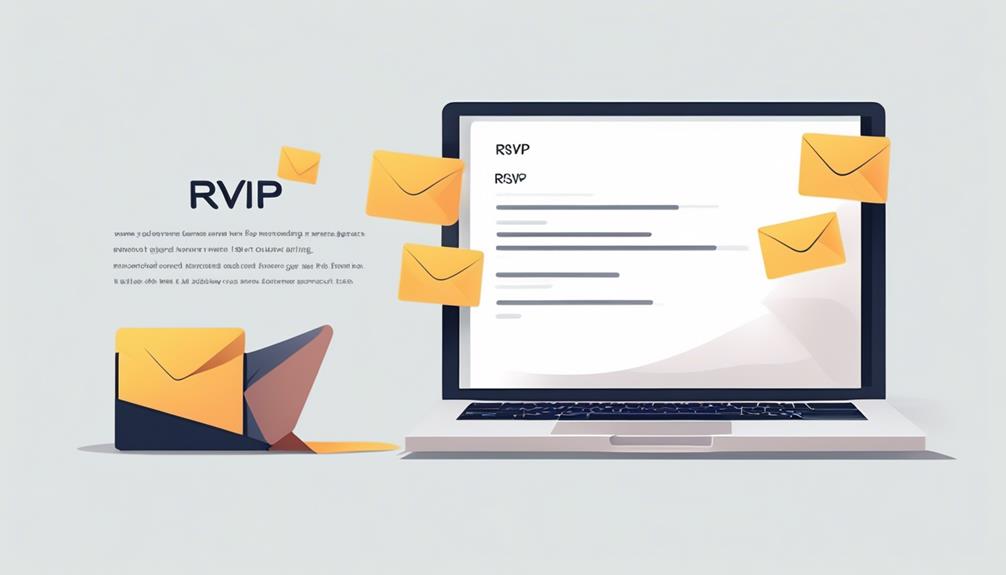
Upon receiving an event invitation, it's essential to clearly articulate the RSVP request, emphasizing the significance of timely responses and providing guidance on crafting a professional and courteous RSVP email.
When crafting a clear RSVP request, it's crucial to clearly explain what RSVP means and why it's important. Encourage recipients to let you know if they can attend and to confirm the exact number of attendees. Provide a standard RSVP format or template to make it easier for invitees to respond.
It's also important to offer RSVP samples or examples to guide recipients on how to write an RSVP email professionally. Emphasize the importance of prompt responses and encourage honesty and openness in their replies.
When making the RSVP request, be clear and direct in asking recipients to confirm their attendance. Use language that's polite and courteous, but also conveys the importance of their response.
Polite RSVP Email Closure
We appreciate the invitation and look forward to the event. It's important to conclude your RSVP email with a polite and friendly closure to leave a positive impression. Expressing gratitude for the invitation and conveying anticipation for the event is essential. Use phrases like 'Looking forward to the event,' 'Thank you for the invitation,' or 'Warm regards' to conclude your email respectfully. It's crucial to ensure that your closing aligns with the tone and formality of the event or the relationship with the host. Signing off with your name or a personalized closing, such as 'Best wishes' or 'Sincerely,' maintains professionalism. When replying, if you cannot attend, please let the host know. Here is an example of a polite RSVP email closure:
| Looking forward to the event | Thank you for the invitation | Warm regards |
|---|---|---|
| Excitement and anticipation | Gratitude | Friendliness |
Closing your RSVP email with warmth and appreciation leaves a lasting positive impression.
Utilizing RSVP Email Templates
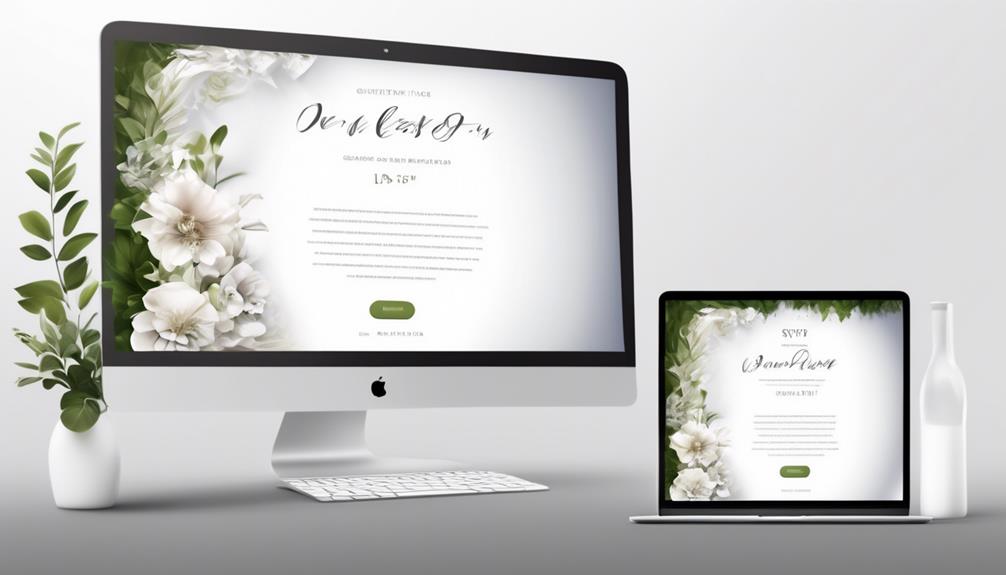
Utilizing email templates can greatly streamline the process of drafting RSVP responses, making the task more efficient and ensuring a consistent and professional tone. When writing invitation emails, using RSVP email templates can save time and effort, especially when responding to multiple invitations. These templates often include standard phrases such as 'Répondez s'il vous plaît,' 'We look forward to seeing you,' and 'Please kindly respond by [event date].' They can also provide guidance on how to address various RSVP responses, such as accepting, declining, or expressing gratitude for the invitation.
In addition to social events, RSVP emails are also crucial in professional settings, such as job applications, where prompt and well-crafted responses are essential. Utilizing templates can help maintain a polished and organized approach, which is particularly important for seating arrangements, dietary requirements, and other logistical considerations.
Mastering RSVP Response Etiquette
Mastering RSVP response etiquette involves understanding the significance of timely and respectful RSVP responses and adhering to established social and professional norms. When crafting an RSVP reply, it's crucial to strike the right tone, conveying your response clearly and professionally.
Whether you're unable to attend or excited to say yes, it's essential to communicate your decision promptly, allowing the host to make necessary arrangements. Politely declining an invitation requires tact and consideration, ensuring that the host understands your decision while expressing gratitude for the invitation.
In professional settings, such as event planning, mastering RSVP response etiquette is paramount for maintaining professional relationships and ensuring smooth coordination. Clear and concise language in RSVP messages is key, as it demonstrates respect for the host's time and effort in organizing the event.
Frequently Asked Questions
How Do You RSVP in an Email Example?
Sure, we can definitely help with that.
When responding to an email invitation, it's important to be polite and timely.
A simple 'Thank you for the invitation. We'll be attending the event' is a good example of how to RSVP in an email. It's concise and clearly conveys your response.
Remember to include all relevant details, such as the date and time of the event, and any plus-ones if applicable.
What Do You Write in a RSVP Response?
We always strive to provide a prompt and detailed response when sending an RSVP.
It's essential to express our gratitude for the invitation, state our intention to attend or regretfully decline, and include any necessary details requested.
Clear communication and a respectful tone are key in ensuring the event planner has the information needed for a successful gathering.
How Do You Confirm Rsvp?
We confirm RSVPs by sending a polite and prompt response to the invitation. It's important to acknowledge the invitation and clearly state our intention to attend or not.
A well-crafted email with a clear subject line and respectful tone can effectively confirm our RSVP. It's also essential to provide the requested response option, whether it's a 'Yes,' 'No,' or 'Maybe,' to ensure proper event planning and organization.
How Do You Politely Ask for Rsvp?
We kindly ask for your RSVP by the indicated date, as it will help us finalize the arrangements.
Your timely response is greatly appreciated.
Thank you for considering our invitation.
Conclusion
We've learned the importance of crafting a clear and engaging RSVP email.
Did you know that 80% of event planners say that receiving timely RSVPs is one of their biggest challenges?
By following the tips outlined and using a well-designed template, we can make the RSVP process smoother for both the host and the guests.
Happy RSVPing!
Erik – Email, SEO, AI Expert Writer Erik is the strategist, the thinker, and the visionary. His role at Influenctor is pivotal in integrating SEO with AI-driven content strategies. With an extensive background in email marketing and a profound understanding of search engine algorithms, Erik develops innovative strategies that elevate our client’s online presence. His work ensures that our content is seen, felt, and remembered.
How to Write Email
How to Write a Professional Email Reminder to Your Professor
Frustrated with unanswered emails? Learn how to craft a compelling reminder email to your professor for a prompt response.

We’ve all experienced it – a hectic week filled with numerous tasks, and then suddenly, the project deadline is just around the corner. You find yourself in need of some essential details from your professor, yet there’s been no reply to your first email.
Crafting a reminder email to your professor can be a delicate task, requiring a balance of assertiveness and respect. It's essential to consider the best approach to ensure your message stands out without coming across as pushy or demanding.
So, how do you strike that balance and ensure your reminder email gets the attention it deserves? Well, let's explore some effective strategies to master the art of writing a reminder email to your professor.
Key Takeaways
- Clearly explain the reason for the follow-up
- Reiterate the importance of the matter
- Express gratitude for the professor's time and attention
- Reflect positively on the sender
Understanding the Purpose
Understanding the purpose of writing a reminder email to a professor is essential for effectively communicating your needs and showing respect for their time. When crafting a polite follow-up email to a professor, it's important to ensure that the email serves as a gentle reminder rather than an imposition.
The original email likely mentioned getting in touch for a specific reason, and a polite follow-up can help speed the process along. It's important to clearly explain the reason for the follow-up, reiterating the importance of the matter and expressing gratitude for the professor's time and attention.
In writing a reminder email to a professor, the key is to be respectful and considerate. It's crucial to avoid sounding demanding or entitled and instead, convey a tone of appreciation and understanding. By doing so, the email not only serves its purpose of gently reminding the professor but also reflects positively on the sender.
Understanding the purpose of the email and approaching it with a polite and respectful tone is fundamental in effectively communicating with professors.
Setting the Right Tone

When composing a reminder email to a professor, it's crucial to set a respectful and professional tone that aligns with the formality of the professor's communication style. This ensures that the email conveys courtesy and appreciation for the professor's time and expertise.
To achieve this, consider the following:
- Be courteous and polite: Express gratitude for the professor's guidance or feedback in your email.
- Use respectful language: Address the professor using their appropriate title and maintain a formal tone throughout the email.
- Show consideration for the professor's time: Keep the email concise and to the point, demonstrating that you value their time.
- Convey enthusiasm and eagerness: Express your genuine interest in receiving feedback or a reminder of your request, showcasing your dedication to the subject matter.
Structuring Your Email
Regarding the structuring of your email, emphasizing clarity and directness in your communication will ensure your message is effectively conveyed to the professor.
When composing a reminder email to your professor, it's crucial to structure it in a clear and organized manner.
Begin with a concise and specific subject line that reflects the purpose of your email, such as 'Follow-Up on Meeting Request.'
In the greeting, address the professor using their formal title and last name, for example, 'Dear Professor Smith.'
Clearly state the context of your email and reference any previous communication to provide a reminder of the original discussion or request.
Be explicit about what you're asking the professor to do, whether it's scheduling a meeting, providing feedback, or submitting an assignment.
End the email with a polite closing, such as 'Thank you for your time and attention' or 'Best regards,' followed by your name.
Structuring your email in this manner will ensure that your message is respectful, clear, and easily understandable to the professor.
Polishing Your Email

In crafting a polite follow-up email to your professor, it's essential to pay attention to the finer details of your message, ensuring that it reflects professionalism and respect while effectively conveying your purpose. Polishing your email involves refining the language and structure to create a compelling and respectful message.
Here are some key aspects to consider:
- Tone: Ensure the tone of your email is respectful and courteous, maintaining a professional demeanor throughout the message.
- Clarity: Double-check for any grammatical errors, typos, or confusing language that may detract from the clarity of your email.
- Conciseness: Keep your email brief and to the point, respecting the professor's time while still conveying your request effectively.
- Gratitude: Express your gratitude for the professor's time and consideration, reinforcing a positive and respectful tone in the email.
Ensuring Professionalism
We maintain a formal and respectful tone in our email communications with professors to ensure professionalism and convey our message effectively. When writing a reminder email to a professor, it's crucial to uphold a high level of professionalism. This includes using a clear and concise subject line that accurately reflects the purpose of your email.
Proofreading for spelling and grammatical errors is essential, as these can detract from the professional image you want to project. It's important to avoid using casual language, slang, or emoticons in your communication, as these can be seen as unprofessional.
Expressing gratitude and appreciation for the professor's time and consideration is also key to maintaining a professional tone. Furthermore, it's a good practice to reiterate any important points in your email to ensure that your request is received and addressed.
Frequently Asked Questions
How Do You Politely Send a Reminder Email?
We politely send a reminder email by acknowledging the recipient's busy schedule.
We express our understanding of their workload and reiterating the importance of the matter at hand.
It's crucial to maintain a respectful tone and avoid sounding demanding.
We can also offer additional assistance or information if needed, showing our willingness to collaborate.
Ultimately, a polite reminder email conveys our professionalism and consideration for the recipient's time.
How Do You Politely Resend an Email to a Professor?
We politely resend an email to a professor by first reviewing the original message for clarity and conciseness.
Then, we craft a polite follow-up email, acknowledging the previous correspondence and restating the request or question.
It's important to express understanding of their busy schedule and to offer flexibility for a response.
This demonstrates professionalism and respect for the professor's time while ensuring the message is received.
How Do I Write an Email With a Reminder?
We write reminder emails to professors to prompt a response or follow-up on a previous email. It's important to be polite and professional in our approach, considering the professor's busy schedule. We can mention the original email, express gratitude, and restate our request clearly.
Avoid being pushy or demanding. A well-crafted reminder email can help us maintain a good rapport with our professors and ensure our needs are addressed.
How Do You Say Reminder in a Formal Email?
In a formal email, a polite way to say 'reminder' is by using phrases like 'just a gentle nudge' or 'a quick follow-up.' These expressions convey the message respectfully without coming across as pushy or demanding.
It's important to maintain professionalism and courtesy when sending reminders to professors. By using considerate language, we can effectively communicate our need for a response while showing respect for the recipient's time and priorities.
Conclusion
As we craft our reminder email to our professor, let's remember to approach it with the gentle touch of a painter, delicately adding the final strokes to create a masterpiece.
Our words should be like a soothing melody, resonating with gratitude and respect.
With each carefully chosen phrase, we paint a picture of professionalism and consideration, ensuring our message is received with warmth and understanding.
Erik – Email, SEO, AI Expert Writer Erik is the strategist, the thinker, and the visionary. His role at Influenctor is pivotal in integrating SEO with AI-driven content strategies. With an extensive background in email marketing and a profound understanding of search engine algorithms, Erik develops innovative strategies that elevate our client’s online presence. His work ensures that our content is seen, felt, and remembered.
-

 Email Automation4 weeks ago
Email Automation4 weeks agoAutomated Email Marketing 101: A Beginner's Tutorial
-

 Email Warmup1 month ago
Email Warmup1 month agoWarm Follow-Up Email
-

 Email Design Hub2 months ago
Email Design Hub2 months ago3 Essential Tools for Email Marketing Design Success
-

 Email Marketing1 month ago
Email Marketing1 month agoWhat Is Email Marketing Advantages and Disadvantages
-

 Email Marketing1 month ago
Email Marketing1 month agoWhy Email Marketing Is Effective
-

 Email Template1 month ago
Email Template1 month agoCrafting the Perfect Book Club Invitation Email Template
-

 Search Engine Optimization4 weeks ago
Search Engine Optimization4 weeks agoSEO Checklist: Enhance Your Site’s Performance
-

 Email Marketing1 month ago
Email Marketing1 month agoDoes Email Marketing Work in 2024



















